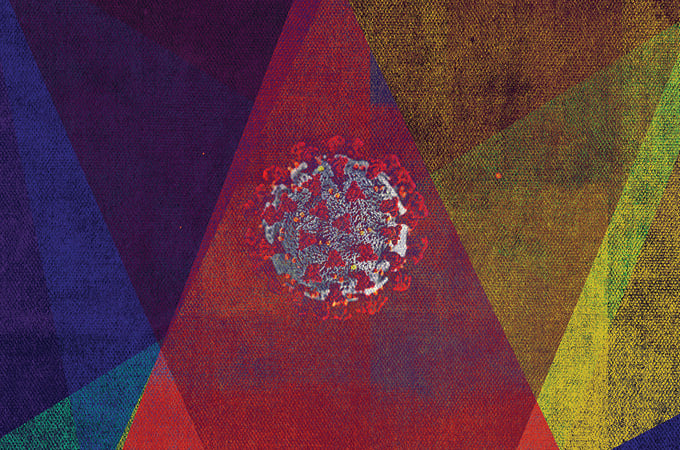From Wuhan to Milan, from New York to Redlands, the COVID-19 pandemic has been both a collective experience and one that is inherently personal. As we try to make sense of what we’re going through, University of Redlands faculty provide their insights into what we are learning, what has changed, and how we move forward.
'Collective vulnerability'
On March 6, Psychology Professor Fredric Rabinowitz and study-away students on the University’s international campus in Salzburg, Austria, were asked by the U of R to return to the United States.
“It was the middle of the semester, so I had that feeling of being yanked out of my reality,” says Rabinowitz.
The surreal feeling followed him throughout the trip home—only 30 people were on the plane, and Centers for Disease Control and Prevention (CDC) employees took his temperature upon landing in San Francisco.
As a psychologist, Rabinowitz is well-versed in helping others deal with their emotions. A pandemic, however, is different in one important way—no one had a framework for what was going to happen or how to handle it. “There was a collective vulnerability that I haven’t seen in my 36 years of teaching at Redlands,” says Rabinowitz, who also notes an upside to the fact that everyone is affected in some way. “When you look out at the world right now and see that everybody’s confronting the same thing, you don’t feel so weird—you’re not so strange; you’re not so lonely.”
Managing the stress and uncertainty, however, can still be framed as an individual process. As he told the Los Angeles Times, “People use whatever coping mechanisms have worked in the past. For some, it is to take control. For others, it is to protect themselves at all costs … [or to] avoid dealing with the reality of the situation.”
Despite the numerous stressors, Rabinowitz says the pandemic also presents an opportunity for reflection: “We’re usually insulated by having a schedule—be it work, school, or any other routine—and we don’t normally question what we’re doing. This situation has enabled us to look at our lives and ask, ‘Where am I putting my energy? What do I care about? Who do I care about? What do I want to improve?’”
After all, you can control your reaction to your circumstances, but not always your circumstances themselves.
Rabinowitz has taken this insight to heart. He reworked his May Term class, Psychology of Interpersonal Relationships, to reflect the campus closure and the shift to online learning. Normally an interactive, experiential class in which students study how they form relationships in real-time, the course instead focused on how relationships are formed in a virtual world.
“Can we achieve a level of deeper friendship, of communication, of understanding, of closeness in this [virtual] modality?” He pauses, considering the question’s broader implications. “It’s an experiment. We’re going to learn new things.”
Despite the change of delivery method for his classes, Rabinowitz underlines one constant: “The trademark Redlands education is all about strong interactions. I’m trying to make sure we can still show care for students’ wellbeing.”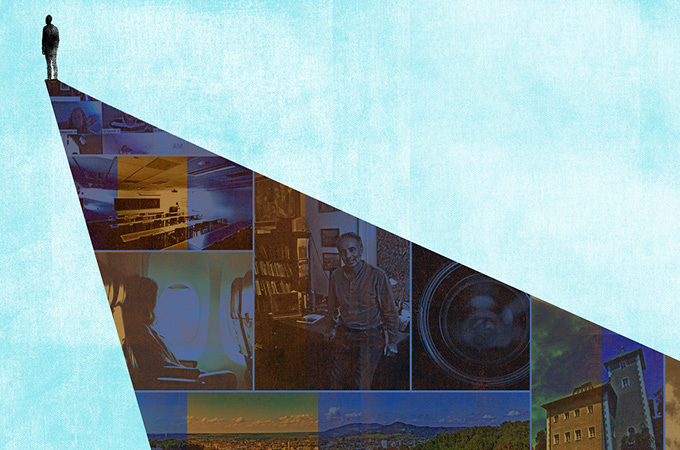
Coping by caring
Rev. Laurie Garrett-Cobbina is the Shaw Family Chair for Clinical Pastoral Education and director of the Shaw Chaplaincy Institute at the Graduate School of Theology (GST). As a faculty member, she teaches spiritual-care providers to care for the infirm. As a pastor, she provides spiritual guidance to her congregation.
During the pandemic, Garrett-Cobbina says she and many of her colleagues at the GST found new and vital ways to provide care and support through virtual classes and online services, such as those offered from the Marin campus. Apart from her work as a pastor and a teacher, Garrett-Cobbina, for example, is also working to provide a 24/7 spiritual hotline for marginalized African American communities hit hard by the virus.
“People have shown a tremendous capacity to care for their communities during this pandemic,” she says. “Although we are all affected, we also have an opportunity to create a new story of hope, survival, and resiliency. That is how people recover from a tragedy, from a catastrophic change in their lives.”
Professor of Religious Studies Fran Grace agrees that caring about others needs to be a central response to the challenges presented by the pandemic—and by life: “We live in a culture that is all about me, me, me. At this time, we’re learning that we survive because of other people who give us affection, attention, and love. Focusing on making [others] the centerpiece of life at the moment is so beautiful.”
In addition to self-care, perspective, acceptance, and reflection, Grace’s suggestions for coping during this time include reaching out by phone, letter, Zoom or FaceTime, or online group. She suggests encouraging others, thanking them for their contribution to our lives, or just taking the time to talk, laugh, sing, or cry for a few minutes. Grace is putting these measures into practice in her own life, including offering virtual meditation sessions to the University community.
She also notes “social distancing” provides opportunities to forge a deeper connection with those we live with. As one humorous example, she tells the story of overhearing a mother saying to her children early in the lockdown period, “It’s going to be a long three weeks if we can’t learn to get along!”
“The gift of this shift is to experience that we are connected in ways we hadn’t even realized,” Grace says. “We have a profound influence on each other. We can either bring the spirit of peace to others, or we can transmit fear. Let’s choose peace, humor, hope, clarity, and kindness.”
Déjà vu
A little more than 100 years ago, the country faced a pandemic, brought home by American soldiers returning from Europe during World War I. Making its way to Southern California in September 1918, the disease infected several University of Redlands students, prompting President Victor LeRoy Duke and the U of R faculty to close the University twice—the first time for two weeks in October, and then another week in November with an outbreak in the student barracks of the Student Army Training Corps unit.
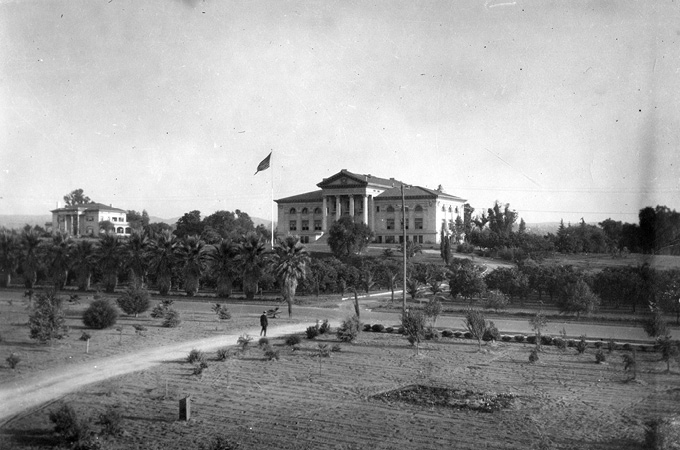 Large public gatherings, including church events, were disallowed, even while many businesses remained open.
Large public gatherings, including church events, were disallowed, even while many businesses remained open.
This ditty ran in the Redlands Daily Facts on Oct. 11, 1918: “Cover up each cough and sneeze. If you don’t, you’ll spread disease.”
“People were instructed to practice regular handwashing and stay home if they had any symptoms,” says Adjunct History Professor Nathan Gonzales. “They were told to wear masks, and local papers published detailed instructions on how to make them. But then, as now, no one knew much about the virus or how to deal with it long term.”
Gonzales notes it is remarkable how similar our public health toolbox is today.
The University didn’t have any casualties due to the 1918 influenza outbreak, but Gonzales says people learned a vital lesson. “My suspicion is that people had a heightened sense of the importance of cleanliness and keeping track of the spread of disease. In the same way, I think that sense will stay with us past the COVID-19 pandemic.”
Director of the Health, Medicine, and Society program James Krueger, who was discussing COVID-19 with students well before it arrived on American soil, notes that one approach to controlling pandemics is the tried-and-true method of case identification and tracking, combined with quarantine—a practice that has existed since the 14th century. In fact, the word “quarantine” comes from the Italian quaranta giorni or 40 days—the period ships were required to sit at anchor before arriving in Venice to prevent the spread of the plague.
“If you have aggressive measures in place for case identification and tracing, you can quarantine individuals,” says Krueger, who underlines the policy implications for today’s world. “If you don’t have that infrastructure, it means once cases start reappearing, you’ve got to shut everything down again.”
The promise of geographic information
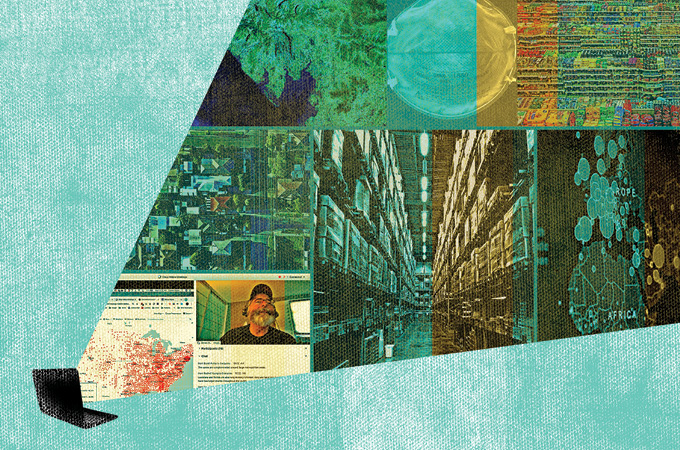 While disease and measures to control it have been a constant in human history, Steve Moore, director of the Center for Spatial Studies, believes that at least one important facet has changed—technology and the ability it gives us to compile and track data. Today, we have the technical means to track the number of infections, recoveries, and deaths from this communicable disease, and we’re able to make that data available in granular detail.
While disease and measures to control it have been a constant in human history, Steve Moore, director of the Center for Spatial Studies, believes that at least one important facet has changed—technology and the ability it gives us to compile and track data. Today, we have the technical means to track the number of infections, recoveries, and deaths from this communicable disease, and we’re able to make that data available in granular detail.
“Government officials, commercial operations, news organizations, and health-care workers can use these incredible real-time data sources, which give us a great opportunity to respond to what’s happening quickly and easily,” says Moore, who teaches a spatial thinking class.
Geographic information systems (GIS) data visualizations don’t just show the contagion itself. One site shows how well residents of various cities are practicing social distancing by tracking and mapping GPS locations from cell phone data. Another site maps how many hospital beds and ventilators are available in intensive care units across the country. The data can be used to redistribute other essential supplies, such as food, or to look at vulnerable populations so policymakers and health-care workers can respond.
That isn’t to say that there isn’t room for improvement. In fact, many of the barriers to good data have been human, rather than technical, including the lack of availability of COVID-19 tests and distrust of official numbers released by governments around the world.
Like Krueger, Moore says he and his students were tracking the coronavirus before it even hit the United States. “A big focus in my class is to help students become better consumers of data and look at data more responsibly,” he says. “I try to illustrate to my students the incredible power of all this data and how we can leverage it.”
And, with the disruption of the traditional classroom this spring, Moore kept his focus on students: “The students aren’t going to remember your Webex lectures or how quickly you adapted to teaching online,” he says. “What they’re going remember is your compassion and empathy, and how you provided a sense of calm in a chaotic time.”
Schooling children and their educators
The power and pitfalls of technology can also be seen in the educational arena. The fallout of the coronavirus and the subsequent orders to shelter at home were deeply felt in students’ lives all over the country, at every grade level. Working parents suddenly found themselves expected to homeschool their children, with or without assignments sent electronically, as well as to provide childcare. Teachers struggled to deliver lessons online without prior guidelines.
According to Nicol Howard, a U of R professor of learning and teaching, the pandemic has prompted educators to expand their thinking about the possibilities of educating students at home, but it has also raised questions of equity. As education news organization EdSurge reported, 14 percent of households with school-age children do not have internet access, and students from low-income backgrounds are likely to fall behind their peers if learning is paused for too long.
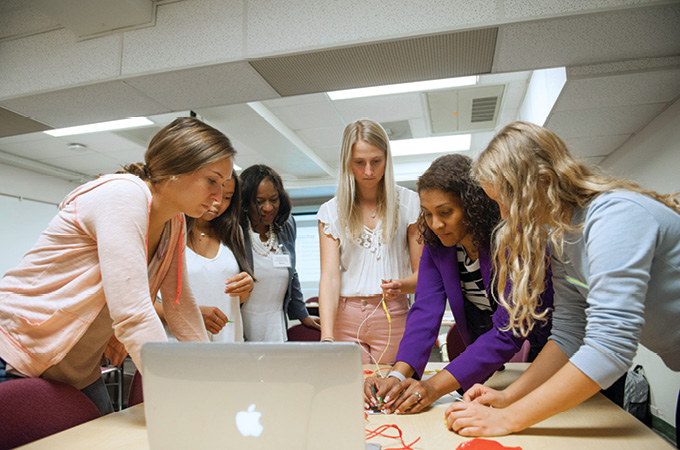 As a co-author of the books Closing the Gap: Digital Equity Strategies for the K-12 Classroom and Closing the Gap: Digital Equity Strategies for Teacher Prep Programs, Howard knew even before the pandemic that technology was an important issue for educators. The abrupt shift to online learning during the pandemic has highlighted some key barriers.
As a co-author of the books Closing the Gap: Digital Equity Strategies for the K-12 Classroom and Closing the Gap: Digital Equity Strategies for Teacher Prep Programs, Howard knew even before the pandemic that technology was an important issue for educators. The abrupt shift to online learning during the pandemic has highlighted some key barriers.
“Whether you’re teaching in K-12 or higher education, access needs to be considered, including availability of a device, internet connectivity, and bandwidth from students’ homes,” says Howard, who has also acted as a resource for her U of R colleagues during the pandemic (see page 17). “These are things that you don’t always ask when you’re in class because the students are using school resources. But when they’re at home—and some might live in rural areas—the first thing to think about is digital equity. We have to be creative about how we can get a hotspot to a student, and how to support students who don’t have connectivity from their residences.”
Some of the solutions can involve the larger community, according to Howard: “I hope, as future teachers, my students think about how to partner with families and communities and bring their home-learning environment into their classrooms, to make it a richer experience for the students.”
Of politics and policy
“A crisis reminds us of the basic utility and function of a government, which is supposed to act for the collective to solve major problems,” says Political Science Professor Renée Van Vechten, who points out that the coronavirus crisis is exposing the strengths and weaknesses of American government and its leadership at the federal and state levels.
The divisive topic of federal politics aside, Van Vechten notes that California was the first to issue a stay-at-home order with the intended effect of “flattening the curve” to allow hospitals to marshal medical resources. Even as Gov. Gavin Newsom was lauded for assessing scientific data to estimate the risks of COVID-19 and acting quickly, he also came under criticism for assuming power under a state of emergency.
“People who put a premium on freedom are particularly incensed by what they view as government overreach in this process,” Van Vechten says. “So, you see two very bedrock American values clash—the tension between serving the public good and respecting personal freedom is exposed and raw in this situation.”
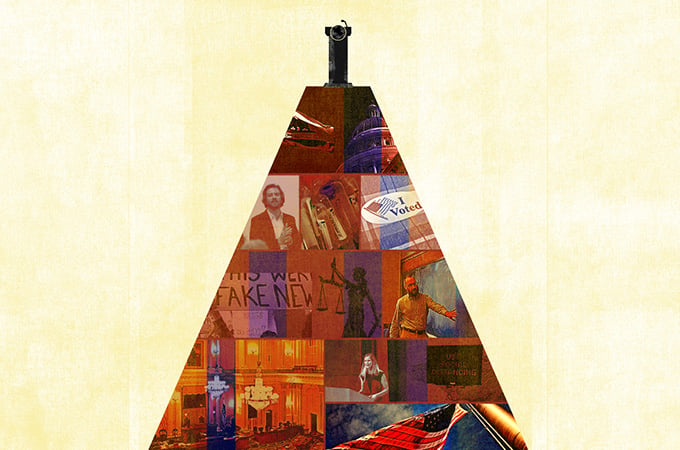 The crisis may spark long-term policy changes, according to Professor of Economics Nicholas Reksten, who thinks the crisis has illustrated the value of social safety nets. “Many Americans can live in enough of a bubble that people don’t need to see themselves as part of society,” he says. “A pandemic really drives home that you can’t get away from being part of that society.”
The crisis may spark long-term policy changes, according to Professor of Economics Nicholas Reksten, who thinks the crisis has illustrated the value of social safety nets. “Many Americans can live in enough of a bubble that people don’t need to see themselves as part of society,” he says. “A pandemic really drives home that you can’t get away from being part of that society.”
Krueger, the director of the Health, Medicine and Society program, believes that sick leave is one item ripe for revision: “How much economic efficiency would we gain if we had rational policies around sick leave? You don’t want employees who are legitimately sick coming into the office because they might spread the disease. But the current work structure makes that very difficult. Lower-wage workers, especially, have no flexibility. They usually can’t take a day off with pay when they’re sick.”
Van Vechten agrees the challenges of COVID-19 have the potential to elicit policy changes. “A crisis will allow you to reposition and provide a window of opportunity for change.” She adds, “Hopefully, we will put a little more thought into disaster preparedness.”
Accelerating the future of work
“COVID-19 has catapulted us into the future of work,” says Johannes Moenius, the William R. and S. Sue Johnson Endowed Chair of Spatial Economic Analysis and Regional Planning in the School of Business. “Everyone should understand that the future began in March, and what I expected to start in three to five years will already happen during our recovery.”
The pandemic proved that employees could communicate and get business done remotely, which could mean companies are more likely to allow employees to work from home in the future. “Certain behaviors will change,” says Moenius. “We don’t need to fly as much for business—we may not even need to drive as much! We may not need to have as many suits, or dress shirts, or ties.”
But the acceptance of technology is not all upside. As Moenius wrote in a MarketWatch opinion piece at the height of the COVID-related restrictions: “American workers are locked into their homes, avoiding contact with anyone and everything touched by others. Social contacts and supply chains are disrupted by coronavirus and the COVID-19 illness it causes. In the workplace, there is a solution that addresses both problems simultaneously: new colleagues immune to pandemics and ready to replace American workers—more robots.”
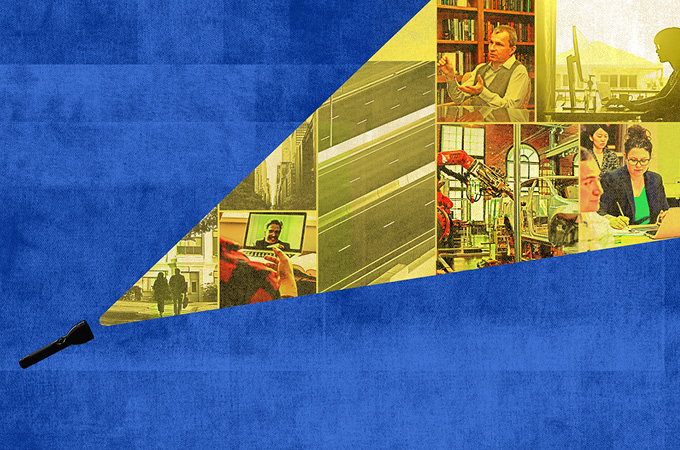 In other words, Moenius says, the coronavirus episode will accelerate and alter a technology shock that has been in the making for more than a decade.
In other words, Moenius says, the coronavirus episode will accelerate and alter a technology shock that has been in the making for more than a decade.
The jobs most at risk for automation—the least likely to reappear during an economic recovery—are low-wage, low-skill positions.
The country is still lacking the data needed to accurately gauge when—and how—the economic recovery will happen. “If anyone tells you that they know how quickly that is going to happen, they have a crystal ball that the regular economists don’t,” Moenius said in an “NBC 4 News” interview. Nevertheless, he’s confident that the best immunization for the unpredictable job landscape is a broad-based education, such as that provided by the University of Redlands.
“We should expect substantial changes in the labor market, which can lead to different ways of doing business in the future,” he says. “People will increasingly need a blend of technical abilities combined with social, collaboration, and design skills, and the capacity to adapt and to solve complex problems.”
Other faculty members agree on the value of a U of R education in these times.
Reksten, the Economics Professor, says, “I’ve been really heartened that my students had the skills to process and explain what’s going on to their family and friends. It’s an amazing argument for a liberal arts education, because there’s so many disciplines at work here, and you really need to be able to draw on so many skills to process it.”
Read more stories from the Summer 2020 issue of Och Tamale Magazine.

